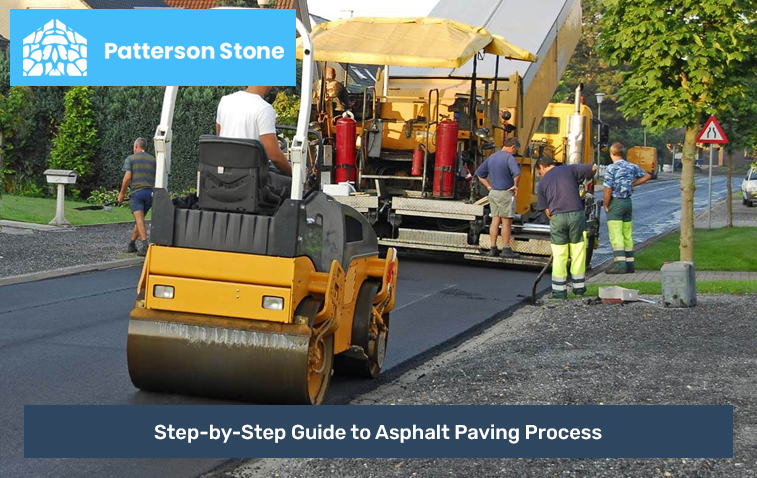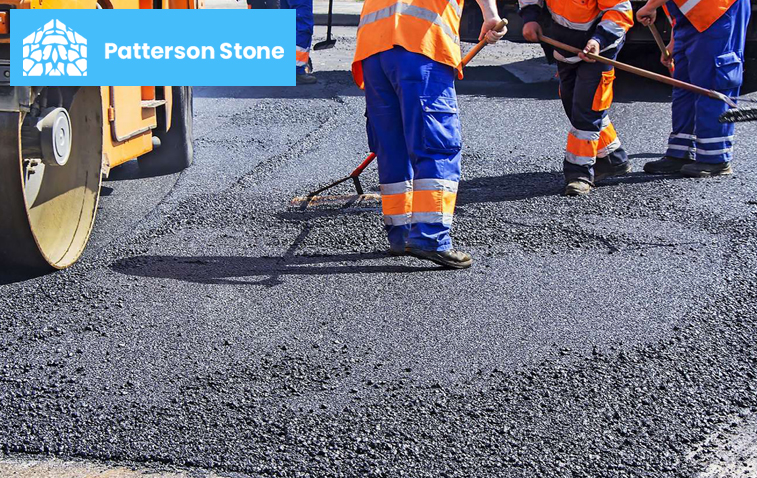Step-by-Step Guide to Asphalt Paving Process
Asphalt is the black, sticky stuff that covers many roads and parking lots. It’s strong and lasts a long time. The process of laying asphalt is like a big puzzle. Many steps fit together to create a perfect surface. From planning to the final touches, each part is important.
Understanding how asphalt paving works can be useful for many reasons. Maybe you’re curious about road construction. Or perhaps you want to know more about your driveway. Whatever the reason, learning about asphalt paving is interesting and fun. This guide will walk you through each step of the process. We’ll use simple words to explain everything. By the end, you’ll know all about how those smooth, black roads come to be. Let’s start our journey into the world of asphalt paving!
Step 1: Planning and Preparation
Before any asphalt goes down, a lot of planning happens. This is a very important step. Good planning makes sure the final road or driveway will be great.
- First, people measure the area. They need to know how big the space is. This helps them figure out how much asphalt they’ll need. They also look at the ground. Is it flat or bumpy? Are there any big rocks or holes? All of these things matter.
- Next, they think about drainage. Water needs somewhere to go when it rains. If water sits on the asphalt, it can cause damage. So, they plan how the water will flow off the new surface.
- They also check what’s under the ground. Are there pipes or wires? These need to be protected. Sometimes, they might need to be moved.
- The weather is important too. Asphalt works best when it’s warm and dry. So, they pick a good time to do the work.
- Lastly, they make sure they have all the right tools and machines. Big rollers, special trucks, and other equipment will be needed. Everything must be ready before the work starts.
Good planning takes time. But it’s worth it. It helps avoid problems later and makes sure the final result is great.
Step 2: Removal of Old Surface
If there’s an old surface, it needs to go. This could be old asphalt, concrete, or just dirt. Getting rid of the old stuff is a big job. But it’s very important.
- First, big machines come in. They might use something called a milling machine. This machine scrapes off the old surface. It’s like a giant cheese grater for roads! The old material gets loaded into trucks and taken away.
- Sometimes, they need to dig deeper. This happens if the ground underneath is bad. They might use excavators or bulldozers. These machines can remove a lot of material quickly.
- As they remove the old surface, they check the ground underneath. They’re looking for soft spots or areas that might cause problems. If they find any, they fix them now. This might mean adding new soil or gravel.
- They also make sure the ground is at the right level. The new asphalt needs a good, even surface to sit on. So they might add or remove dirt to get everything just right.
This step can be noisy and dusty. But it’s necessary. A good new surface needs a clean, solid base to start with.
Step 3: Grading and Sloping
After removing the old surface, it’s time to shape the ground. This step is called grading and sloping. It’s all about getting the right shape for the new asphalt.
- First, they use a machine called a grader. It has a long blade that moves dirt around. The grader makes the ground nice and flat. But not too flat! A little slope is good. It helps water run off the road.
- They pay special attention to the edges. The sides of the road need to be just right. This helps the asphalt stay in place and not crumble at the edges.
- Next, they check the slope. The slope is how much the road tilts from side to side. A good slope sends rain to the sides of the road. This keeps puddles from forming. They use special tools to measure the slope and make sure it’s perfect.
- Sometimes, they add gravel at this stage. Gravel helps make a strong base for the asphalt. They spread it out evenly and then pack it down tight. This makes a solid foundation for the new road.
Grading and sloping take time and skill. But they’re super important. They help the new road last longer and work better. A well-graded road is safer and more comfortable to drive on.
Step 4: Applying the Tack Coat
Now that the ground is ready, it’s time for the tack coat. The tack coat is like glue for asphalt. It helps the new asphalt stick to the surface below.
- The tack coat is a thin, sticky liquid. It’s usually black or brown. They spray it on the ground using a special truck. The truck has a long arm with nozzles. These nozzles spray the tack coat evenly over the whole area.
- They have to be careful when applying the tack coat. Too much can make the asphalt slide around. Too little won’t hold it in place. They need just the right amount.
- The weather matters for this step too. The tack coat works best when it’s warm and dry. If it’s too cold or wet, they might have to wait.
- After spraying, they let the tack coat sit for a bit. It needs time to get sticky. This usually doesn’t take very long. Maybe 10 or 15 minutes.
- While they wait, they make sure no one drives or walks on the tack coat. It’s very sticky and can make a big mess! They might put up signs or barriers to keep people away.
The tack coat is thin, but it’s really important. It helps the new asphalt bond well. This makes the road stronger and helps it last longer.
Step 5: Asphalt Paving
Now comes the exciting part – laying down the new asphalt! This is when the road really starts to take shape.
- Big trucks bring in the hot asphalt mix. The mix is very hot, usually around 300 degrees Fahrenheit. That’s much hotter than boiling water! The trucks dump the asphalt into a machine called a paver.
- The paver is like a big, slow-moving oven on wheels. It spreads out the hot asphalt evenly. As it moves along, it leaves a smooth layer of asphalt behind. The paver can adjust how thick the asphalt is. Different roads need different thicknesses.
- Behind the paver, workers use special rakes. These rakes help smooth out any uneven spots. They work quickly because the asphalt starts cooling right away.
- For big roads, they might use more than one paver. The pavers work side by side. This helps them finish faster and makes sure the whole road is the same temperature.
- They have to be careful about the edges of the new asphalt. The edges need to be just right. If they’re not, water can get under the road and cause damage.
- As they work, they constantly check the thickness of the asphalt. They want it to be the same everywhere. This helps the road last longer and be safer to drive on.
Paving is a big job that takes teamwork. Everyone has to work together to get it right. But when it’s done, you can see the new road taking shape!
Step 6: Compaction
After the asphalt is laid down, it’s time for compaction. Compaction means pressing the asphalt down to make it solid and smooth. This step is super important for making a strong, long-lasting road.
- Big, heavy machines called rollers do the compaction. These rollers look like giant steam irons on wheels. They’re very heavy and can weigh as much as an elephant!
- The rollers go back and forth over the new asphalt. They press it down and squeeze out any air bubbles. This makes the asphalt dense and strong. The more compact the asphalt is, the better it will hold up over time.
- They usually start rolling right after the paver finishes. The asphalt is still hot then. Hot asphalt is easier to compact. As they roll, the asphalt slowly cools and hardens.
- Different types of rollers might be used. Some have smooth steel wheels. Others have rubber tires. Each type does a slightly different job. They might use one type first and then switch to another.
- The edges of the road get special attention. The rollers have to be careful not to push the asphalt out at the sides. They use special techniques to make sure the edges are strong.
- Compaction takes skill and experience. The roller drivers have to know just how much pressure to use. Too much can damage the asphalt. Too little won’t make it strong enough.
When compaction is done right, the road will be smooth and strong. It will be ready to handle cars, trucks, and whatever else drives on it!
Step 7: Cooling and Finishing Touches
The final step in asphalt paving is cooling and adding finishing touches. This part takes patience. The new asphalt needs time to cool down and harden completely.
- How long it takes to cool depends on a few things. The weather matters a lot. On a hot day, it takes longer. On a cool day, it’s faster. The thickness of the asphalt matters too. Thicker layers take longer to cool than thin ones.
- While the asphalt is cooling, no one can drive on it. They might put up barriers or signs to keep people off. Driving on hot asphalt can leave marks or cause damage.
- As it cools, they check the whole surface. They’re looking for any small problems. Maybe there’s a little bump or a low spot. If they find any issues, they fix them right away. It’s easier to fix small problems now than big ones later.
- They also paint lines on the road. These show where lanes are and where it’s safe to pass. They use special paint that sticks well to asphalt. The paint has little glass beads in it. These beads reflect light and make the lines easy to see at night.
- Finally, they clean up the area. They remove any extra asphalt or debris. They make sure the edges of the road are neat and tidy. Everything should look clean and professional.
When all this is done, the new road is ready! It looks smooth and black. It’s strong and ready for cars and trucks to drive on. A well-done asphalt paving job can last for many years.
We’ve travelled through the whole asphalt paving process. From start to finish, it’s a big job with many steps. Each step is important. They all work together to make a good road. You’ll understand all the work that went into making it. And maybe you’ll appreciate it a little more too! Asphalt paving is a cool process that helps make our world better, one road at a time.
FAQ
A well-constructed asphalt surface can last 15-20 years with proper maintenance. Factors like traffic volume, climate, and regular upkeep affect its lifespan. Sealcoating every few years can help extend its durability and appearance.
While possible, cold weather paving is challenging. Asphalt cools faster, making it harder to compact properly. Ideal temperatures are above 50°F (10°C). In colder conditions, special techniques and additives might be necessary to ensure quality.
Asphalt can be environmentally friendly. It’s 100% recyclable, and many new pavements contain recycled materials. Some mixes use warm-mix technology, which requires less energy to produce. Proper installation also helps reduce fuel consumption for vehicles.
Generally, you can walk on new asphalt after 24 hours and drive on it after 3-5 days. However, it takes about 6-12 months for asphalt to fully cure. Avoid parking in the same spot or turning sharply during the first month.


